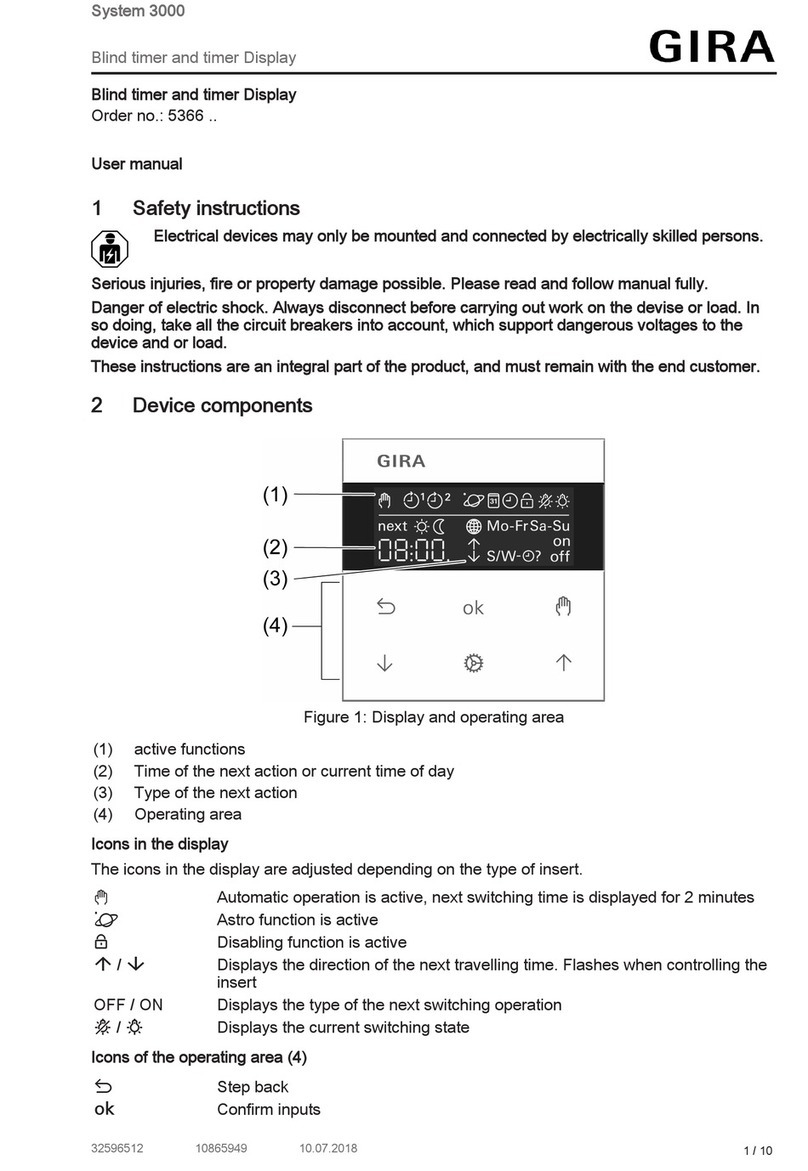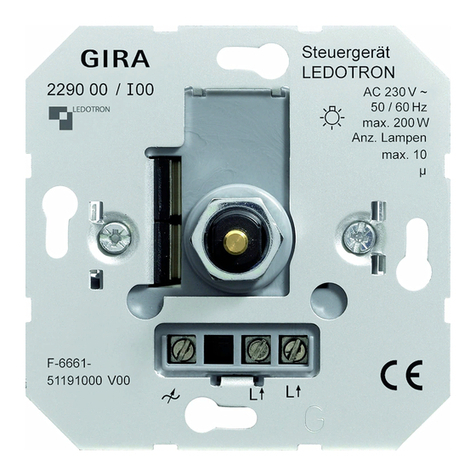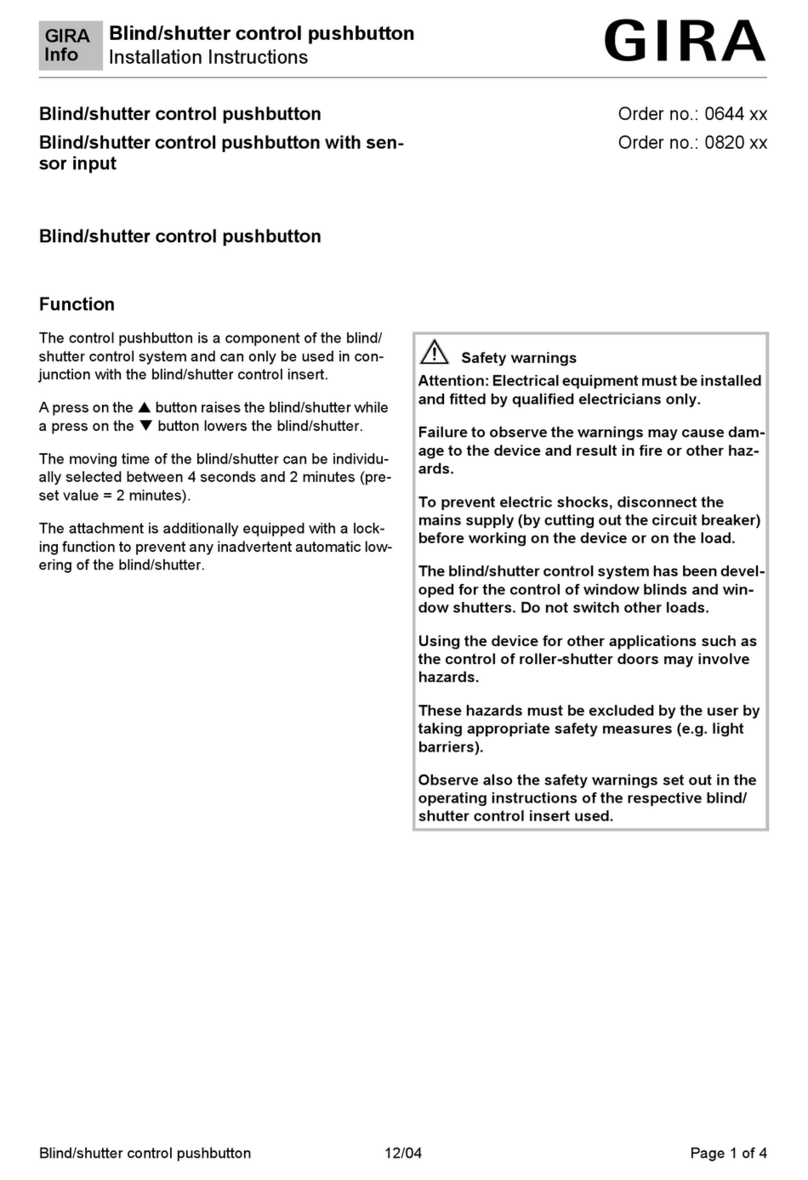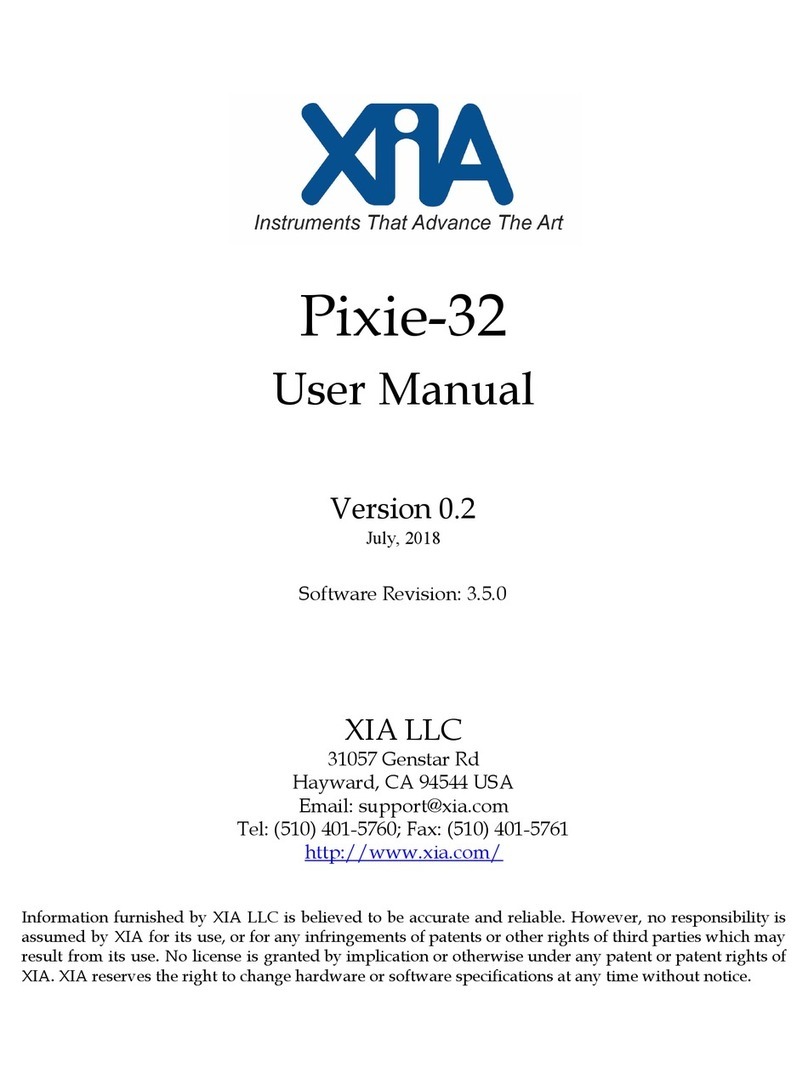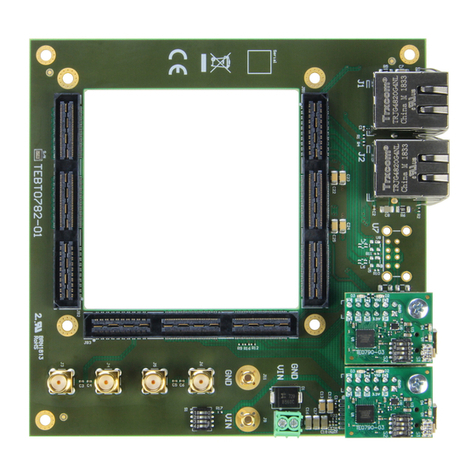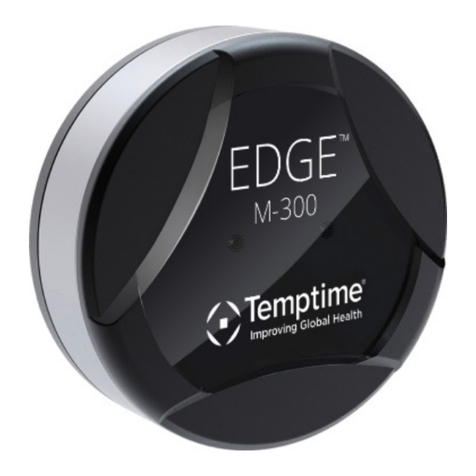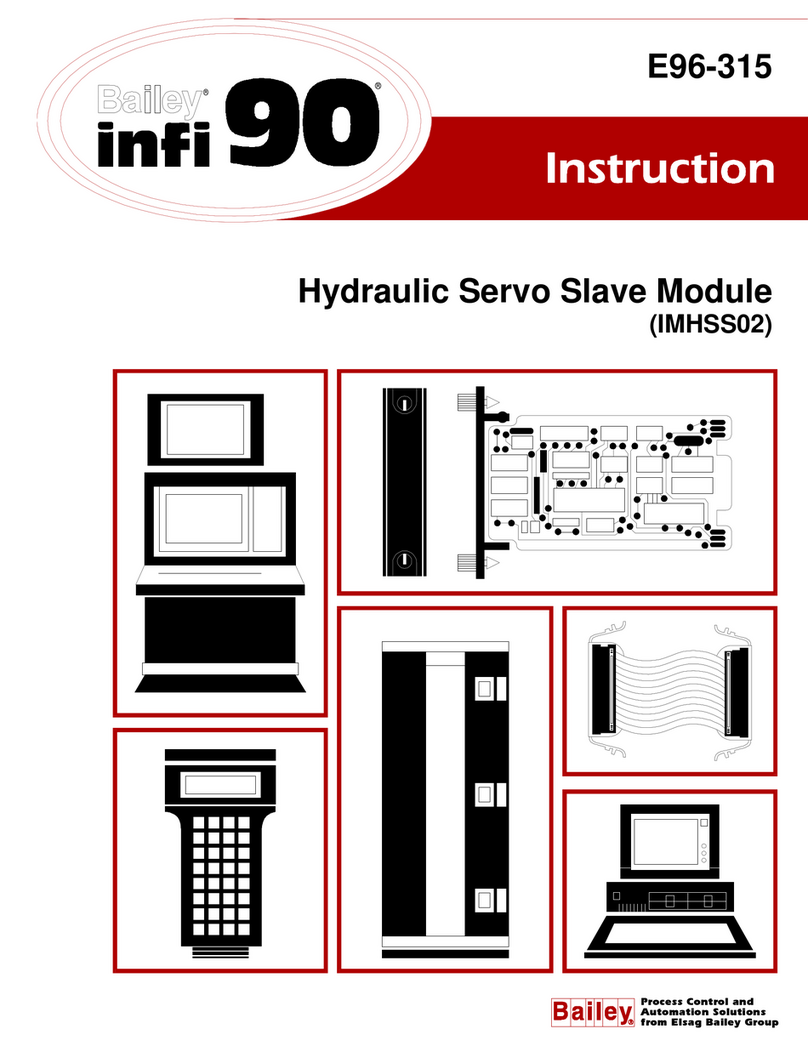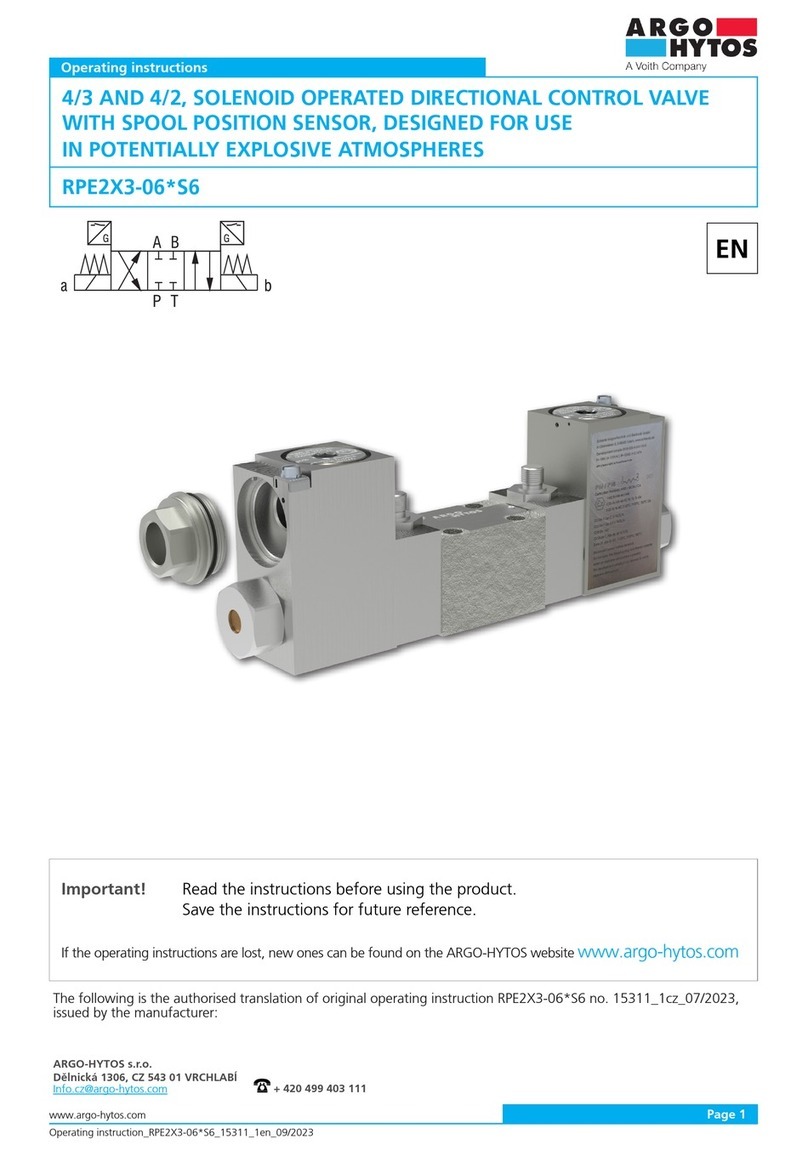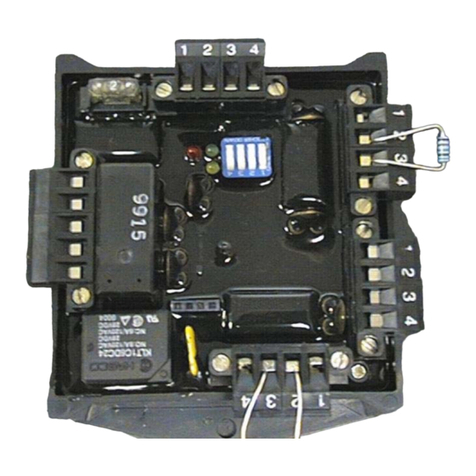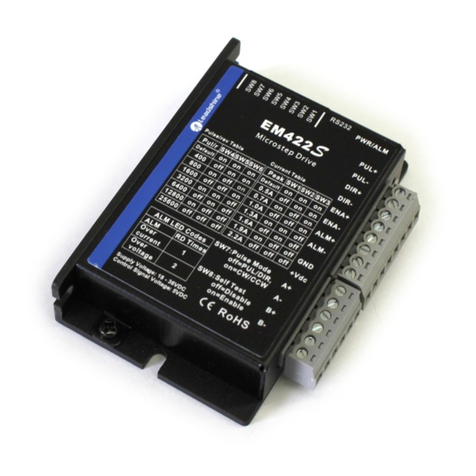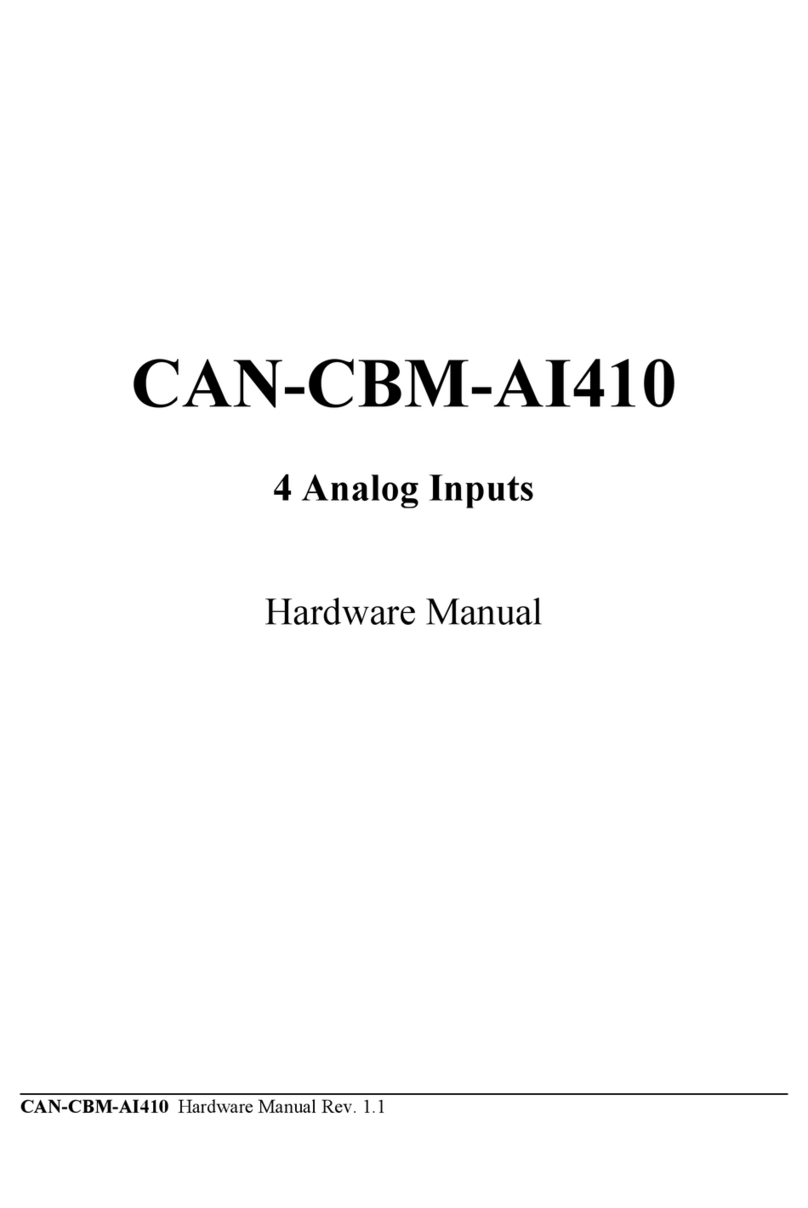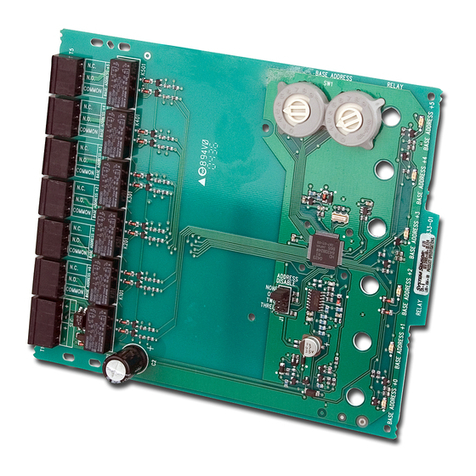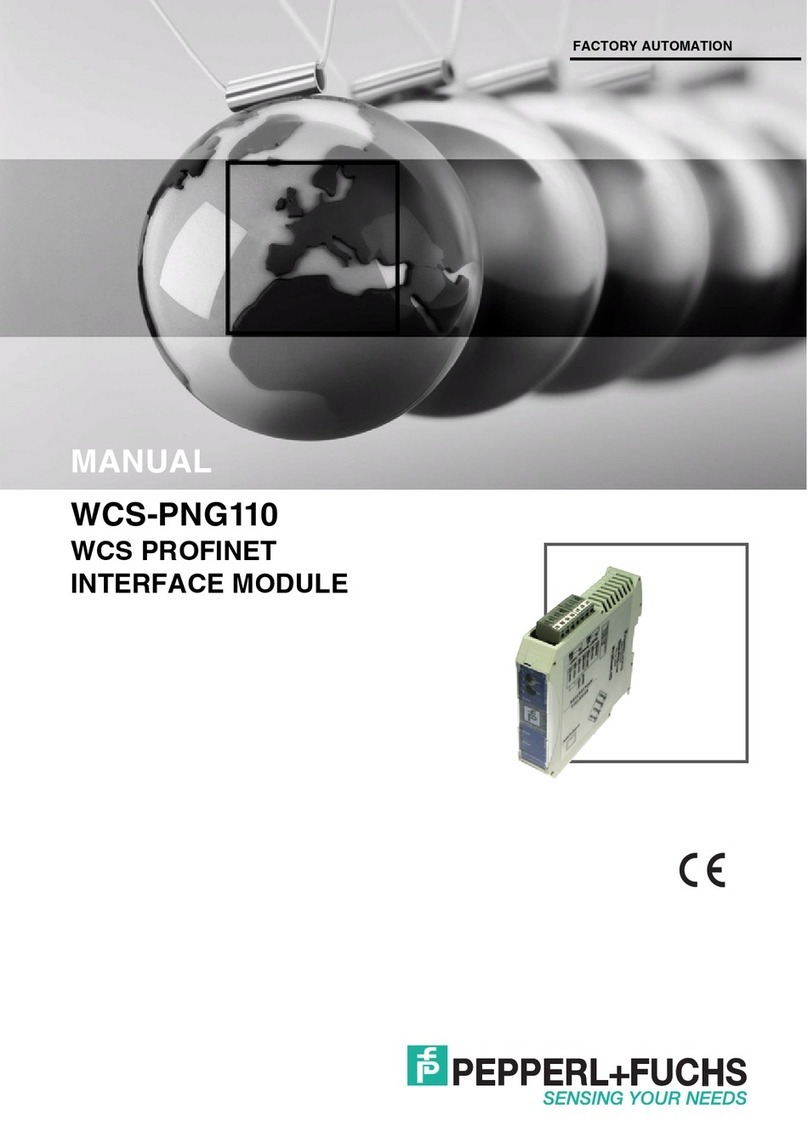Gira Dual 2347 00 User manual

Gira
Giersiepen GmbH & Co. KG
Electrical installation systems
P.O. Box 1220
42461 Radevormwald
Phone +49 (0) 2195 602 - 0
Fax +49 (0) 2195 602 - 191
www.gira.de
For your safety
Improper electrical installations can result
in serious material damage or injuries,
e.g. due to fire or an electric shock.
Safe electrical installation can only be
guaranteed when performed by
individuals who can verify their basic
knowledge in the following areas:
• Connecting to installation networks
• Connecting more than one electrical
device
• Laying electrical cable
In general, only qualified professionals in
the field of electrical installation technology
possess this knowledge and experience.
If these minimum requirements are not
fulfilled or disregarded, there is a risk of
personal liability for material damage and
injury.
These instructions are part of the product
and must remain with the end customer.
iConfiguration and installation may
only be performed by an expert
As per DIN EN 14676, configuration, installa-
tion and maintenance of the smoke alarm
device may only be performed by a qualified
expert.
For this purpose, Gira offers the "Certified
expert for smoke alarm devices in accord-
ance with DIN EN 14676" online course,
complete with certificate.
More detailed information can be found
under "akademie.gira.de".
Product features
The radio module for smoke alarm device
Dual (hereinafter referred to as the "radio
module") enables the wireless networking
of smoke alarm devices Dual Q in the Gira
radio bus system.
• The networking terminals of the smoke
alarm device Dual can still be used when
the radio module is attached. This allows
combined wired-radio networking to be
established.
• It is possible to mute a local smoke
detection alarm using a radio remote
control or radio wall transmitter.
• Actuators and transmitters of the eNet
radio system can be controlled using the
transformer for eNet.
• The radio range can be extended with
repeater mode in the radio module.
• Up to 40 smoke alarm devices can be
networked.
• The radio module is downward
compatible, which means it can also
be used for the smoke alarm device
Dual/VdS.
Device description
1 Battery compartment with battery
2 Radio module
3 Programming button with LED
Inserting the radio module
The radio module is inserted as follows:
1. Insert the radio module with the
connection pins into the module
interface (1) of the smoke alarm device
until the module engages.
iSmoke alarm device Dual Q
Please see the installation and operating
instructions of the smoke alarm device
Dual Q for all the information on the smoke
alarm device Dual Q (e.g. installation,
signals, etc.).
13
2
1
Assigning the radio module
Radio modules have to be assigned in order
to communicate with one another (as
transmitter or receiver).
The following assignments are possible:
• Setting up a radio-networked group
(initial setup)
• Assigning the radio module to a radio-
networked group of smoke alarm devices
Dual Q (expansion)
• Assigning the radio module to a radio-
networked group of smoke alarm devices
Dual/VdS (replacing obsolete systems)
• Integrating radio module in the eNet
radio system
• Deleting all assignments
Activating and exiting
programming mode
The following describes how to activate and
exit programming mode on the radio
module.
Activating programming mode
Press the Prog. button (for approx. 4 s) until
the programming LED flashes.
Programming mode is activated for approx.
1 min.
Exiting programming mode
Programming mode ends automatically
when 1 min. has elapsed.
Alternatively, you can briefly press the Prog.
button.
Radio-networked group
Radio modules can only communicate with
each other within a group. A radio-
networked group must be set up for this
purpose.
Setting up a radio-networked group (initial
setup)
1. Insert the radio modules in all smoke
alarm devices Dual Q that should belong
to a group.
2. Activate programming mode on all radio
modules.
3. Repress the Prog. button (approx. 4 s) on
any smoke alarm device Dual Q in the
group until a signal tone is emitted.
4. All LEDs light up continuously: the group
has been set up.
5. Exit programming mode.
As soon as one smoke alarm device in the
group detects smoke or increased
temperature and triggers an alarm, all other
smoke alarm devices in the group are also
triggered.
iRadio-networked group
The following smoke alarm devices can be
set up as radio-networked groups:
- Dual Q <-> Dual Q
- Dual Q <-> Dual/VdS
iObserve the maximum distance in
programming mode
Radio transmitters and receivers must be
positioned at a maximum distance of 5 m
to each other in programming mode.
Assigning the radio module to a radio-
networked group of smoke alarm devices
Dual Q (expansion)
A radio-networked group of smoke alarm
devices Dual Q can be expanded until
reaching the maximum number (40 units).
1. Lay out a smoke alarm device Dual Q
(#1) which has already been assigned.
2. Insert the radio module in the smoke
alarm device Dual Q (#2) which has not
yet been assigned.
3. Activate programming mode on the two
radio modules.
4. Repress the Prog. button (approx. 4 s) of
the radio module on smoke alarm device
#1 until a signal tone is emitted. The
LEDs of both radio modules light up
continuously, and an additional radio
module has been added to the group.
5. Exit programming mode.
Assigning the radio module to a radio-
networked group of smoke alarm devices
Dual/VdS (replacing obsolete systems)
You can assign a smoke alarm device
Dual Q with radio module to an existing
group of smoke alarm devices Dual/VdS
with radio modules (e.g. replacing an
obsolete device).
1. Activate programming mode on the
radio module of any smoke alarm device
Dual/VdS.
2. Activate programming mode on the
radio module of the smoke alarm device
Dual Q.
3. Press the function button of the smoke
alarm device Dual/VdS.
4. All LEDs light up and the new radio
module is assigned to the existing group
of smoke alarm devices Dual/VdS.
5. Exit programming mode.
Radio module in repeater mode
In the state of delivery, repeater mode is
deactivated in the radio module.
Repeater mode is activated whenever one or
more smoke alarm devices no longer
receive signals via radio (or reception is
poor).
Activating repeater mode
1. Select one of the group's centrally
installed smoke alarm devices.
2. Press the Prog. button of the radio
module on the selected smoke alarm
device for 10 s.
After approx. 4 s the LED flashes.
After approx. 10 s the LED flashes faster.
Repeater mode is now activated.
3. Exit programming mode.
iRadio module as a repeater
Only one radio module may be activated as
a repeater per group.
All networked smoke alarm devices must
be reachable via the radio range.
As a repeater, the radio module also
receives weaker radio telegrams and
forwards them with maximum output.
Deactivating repeater mode
Activated repeater mode can be deactivated
at any time.
1. Select the smoke alarm device with
activated repeater mode.
2. Press the Prog. button of the radio
module for 10 s.
After approx. 4 s the LED flashes.
After approx. 10 s the LED flashes more
slowly. Repeater mode is deactivated.
3. Exit programming mode.
Integrating radio module in the eNet radio
system
The eNet radio transformer can be used to
control the radio module actuators and
sensors from the eNet system. In case of
alarm, the light can be switched on or the
blind can be raised, for example. The alarm
telegram of the radio module initiates the
following defined responses with eNet radio
receivers:
Assigning the radio module to an eNet radio
blind actuator Mini
1. Activate programming mode on the eNet
radio blind actuator Mini.
2. Activate programming mode on the eNet
radio transformer.
3. Activate programming mode on the
radio module.
4. Repress the Prog. button of the radio
module (approx. 4 s) until a brief tone is
emitted and the programming LED lights
up continuously. The radio module is
automatically taught into the eNet radio
blind actuator Mini.
5. Press the Prog. button on the eNet radio
blind actuator Mini (approx. 4 s).
6. Activate programming mode on the
remote control, 2-gang.
7. Press the desired channel button on the
remote control, 2-gang until the LEDs of
both eNet devices light up continuously.
The remote control and blind actuator
Mini are connected to one another.
8. Trigger a test alarm on the smoke alarm
device. The smoke alarm device signals,
and the blind is raised.
9. Halt blind adjustment by pressing
channel button 1.
10.Exit programming mode.
Assigning the eNet radio remote control to a
radio module
The radio module can be controlled with an
eNet radio remote control or radio wall
transmitter to switch the smoke alarm
device to mute for up to 15 min.
Although acoustic signalling and
forwarding the alarm signal to networked
smoke alarm devices are suppressed,
optical signalling is not.
eNet radio receiver Response
Switching actuators Switch on
Dimming actuators Switch on at
switch-on
brightness
Blind actuators Raise
iTermination of CE conformity
CE conformity in accordance with
EN 14604 becomes invalid when an eNet
radio remote control or radio wall
transmitter is used for mute switching of a
local smoke detection alarm.
1. Activate programming mode on the
radio transformer for eNet.
2. Activate programming mode on the
remote control, 2-gang.
3. Press the desired channel button on the
remote control until the LEDs of both
eNet devices light up continuously. The
remote control and transformer are
connected to one another.
4. Activate programming mode on the
radio module.
5. Press the taught-in channel button on
the remote control until the LEDs light
up continuously. The remote control and
radio module are connected to one other
via the eNet radio transformer.
6. Exit programming mode.
Up to 14 eNet radio remote controls or radio
wall transmitters can control a radio
module.
Deleting all assignments
To reset radio modules to factory settings,
all assignments (to groups, as repeaters,
etc.) must be deleted.
1. Activate programming mode.
2. Release the Prog. button.
3. Repress the Prog. button of the radio
module (approx. 10 s).
A brief signal tone is emitted after
approx. 4 s.
After approx. 10 s, a longer signal tone
is emitted and the programming LED
lights up continuously.
All assignments have been deleted.
4. Exit programming mode.
Checking the networking of the smoke
alarm device
The radio networking of the smoke alarm
device can be checked prior to installation.
1. Manually activate the smoke alarm:
Press and hold the internal activation
button (initialisation phase approx. 30 s).
Do not release the activation button
during the test!
2. Trigger the test alarm on the smoke
alarm device.
3. When the alarm message is received,
the programming LED of the radio
module continuously lights up. The radio
module is correctly assigned.
4. Briefly press the Prog. button: test mode
is exited.
iThe signal transmitter of the smoke
alarm device muted in test mode
When the test function is active, the signal
transmitter of the smoke alarm device is
muted.
10861626 37/15
Radio module for
smoke alarm device
Dual
2347 00
Installation and operating
instructions
EN

Gira
Giersiepen GmbH & Co. KG
Electrical installation systems
P.O. Box 1220
42461 Radevormwald
Phone +49 (0) 2195 602 - 0
Fax +49 (0) 2195 602 - 191
www.gira.de
For your safety
Improper electrical installations can result
in serious material damage or injuries,
e.g. due to fire or an electric shock.
Safe electrical installation can only be
guaranteed when performed by
individuals who can verify their basic
knowledge in the following areas:
• Connecting to installation networks
• Connecting more than one electrical
device
• Laying electrical cable
In general, only qualified professionals in
the field of electrical installation technology
possess this knowledge and experience.
If these minimum requirements are not
fulfilled or disregarded, there is a risk of
personal liability for material damage and
injury.
These instructions are part of the product
and must remain with the end customer.
iConfiguration and installation may
only be performed by an expert
As per DIN EN 14676, configuration, installa-
tion and maintenance of the smoke alarm
device may only be performed by a qualified
expert.
For this purpose, Gira offers the "Certified
expert for smoke alarm devices in accord-
ance with DIN EN 14676" online course,
complete with certificate.
More detailed information can be found
under "akademie.gira.de".
Product features
The radio module for smoke alarm device
Dual (hereinafter referred to as the "radio
module") enables the wireless networking
of smoke alarm devices Dual Q in the Gira
radio bus system.
• The networking terminals of the smoke
alarm device Dual can still be used when
the radio module is attached. This allows
combined wired-radio networking to be
established.
• It is possible to mute a local smoke
detection alarm using a radio remote
control or radio wall transmitter.
• Actuators and transmitters of the eNet
radio system can be controlled using the
transformer for eNet.
• The radio range can be extended with
repeater mode in the radio module.
• Up to 40 smoke alarm devices can be
networked.
• The radio module is downward
compatible, which means it can also
be used for the smoke alarm device
Dual/VdS.
Device description
1 Battery compartment with battery
2 Radio module
3 Programming button with LED
Inserting the radio module
The radio module is inserted as follows:
1. Insert the radio module with the
connection pins into the module
interface (1) of the smoke alarm device
until the module engages.
iSmoke alarm device Dual Q
Please see the installation and operating
instructions of the smoke alarm device
Dual Q for all the information on the smoke
alarm device Dual Q (e.g. installation,
signals, etc.).
13
2
1
Assigning the radio module
Radio modules have to be assigned in order
to communicate with one another (as
transmitter or receiver).
The following assignments are possible:
• Setting up a radio-networked group
(initial setup)
• Assigning the radio module to a radio-
networked group of smoke alarm devices
Dual Q (expansion)
• Assigning the radio module to a radio-
networked group of smoke alarm devices
Dual/VdS (replacing obsolete systems)
• Integrating radio module in the eNet
radio system
• Deleting all assignments
Activating and exiting
programming mode
The following describes how to activate and
exit programming mode on the radio
module.
Activating programming mode
Press the Prog. button (for approx. 4 s) until
the programming LED flashes.
Programming mode is activated for approx.
1 min.
Exiting programming mode
Programming mode ends automatically
when 1 min. has elapsed.
Alternatively, you can briefly press the Prog.
button.
Radio-networked group
Radio modules can only communicate with
each other within a group. A radio-
networked group must be set up for this
purpose.
Setting up a radio-networked group (initial
setup)
1. Insert the radio modules in all smoke
alarm devices Dual Q that should belong
to a group.
2. Activate programming mode on all radio
modules.
3. Repress the Prog. button (approx. 4 s) on
any smoke alarm device Dual Q in the
group until a signal tone is emitted.
4. All LEDs light up continuously: the group
has been set up.
5. Exit programming mode.
As soon as one smoke alarm device in the
group detects smoke or increased
temperature and triggers an alarm, all other
smoke alarm devices in the group are also
triggered.
iRadio-networked group
The following smoke alarm devices can be
set up as radio-networked groups:
- Dual Q <-> Dual Q
- Dual Q <-> Dual/VdS
iObserve the maximum distance in
programming mode
Radio transmitters and receivers must be
positioned at a maximum distance of 5 m
to each other in programming mode.
Assigning the radio module to a radio-
networked group of smoke alarm devices
Dual Q (expansion)
A radio-networked group of smoke alarm
devices Dual Q can be expanded until
reaching the maximum number (40 units).
1. Lay out a smoke alarm device Dual Q
(#1) which has already been assigned.
2. Insert the radio module in the smoke
alarm device Dual Q (#2) which has not
yet been assigned.
3. Activate programming mode on the two
radio modules.
4. Repress the Prog. button (approx. 4 s) of
the radio module on smoke alarm device
#1 until a signal tone is emitted. The
LEDs of both radio modules light up
continuously, and an additional radio
module has been added to the group.
5. Exit programming mode.
Assigning the radio module to a radio-
networked group of smoke alarm devices
Dual/VdS (replacing obsolete systems)
You can assign a smoke alarm device
Dual Q with radio module to an existing
group of smoke alarm devices Dual/VdS
with radio modules (e.g. replacing an
obsolete device).
1. Activate programming mode on the
radio module of any smoke alarm device
Dual/VdS.
2. Activate programming mode on the
radio module of the smoke alarm device
Dual Q.
3. Press the function button of the smoke
alarm device Dual/VdS.
4. All LEDs light up and the new radio
module is assigned to the existing group
of smoke alarm devices Dual/VdS.
5. Exit programming mode.
Radio module in repeater mode
In the state of delivery, repeater mode is
deactivated in the radio module.
Repeater mode is activated whenever one or
more smoke alarm devices no longer
receive signals via radio (or reception is
poor).
Activating repeater mode
1. Select one of the group's centrally
installed smoke alarm devices.
2. Press the Prog. button of the radio
module on the selected smoke alarm
device for 10 s.
After approx. 4 s the LED flashes.
After approx. 10 s the LED flashes faster.
Repeater mode is now activated.
3. Exit programming mode.
iRadio module as a repeater
Only one radio module may be activated as
a repeater per group.
All networked smoke alarm devices must
be reachable via the radio range.
As a repeater, the radio module also
receives weaker radio telegrams and
forwards them with maximum output.
Deactivating repeater mode
Activated repeater mode can be deactivated
at any time.
1. Select the smoke alarm device with
activated repeater mode.
2. Press the Prog. button of the radio
module for 10 s.
After approx. 4 s the LED flashes.
After approx. 10 s the LED flashes more
slowly. Repeater mode is deactivated.
3. Exit programming mode.
Integrating radio module in the eNet radio
system
The eNet radio transformer can be used to
control the radio module actuators and
sensors from the eNet system. In case of
alarm, the light can be switched on or the
blind can be raised, for example. The alarm
telegram of the radio module initiates the
following defined responses with eNet radio
receivers:
Assigning the radio module to an eNet radio
blind actuator Mini
1. Activate programming mode on the eNet
radio blind actuator Mini.
2. Activate programming mode on the eNet
radio transformer.
3. Activate programming mode on the
radio module.
4. Repress the Prog. button of the radio
module (approx. 4 s) until a brief tone is
emitted and the programming LED lights
up continuously. The radio module is
automatically taught into the eNet radio
blind actuator Mini.
5. Press the Prog. button on the eNet radio
blind actuator Mini (approx. 4 s).
6. Activate programming mode on the
remote control, 2-gang.
7. Press the desired channel button on the
remote control, 2-gang until the LEDs of
both eNet devices light up continuously.
The remote control and blind actuator
Mini are connected to one another.
8. Trigger a test alarm on the smoke alarm
device. The smoke alarm device signals,
and the blind is raised.
9. Halt blind adjustment by pressing
channel button 1.
10.Exit programming mode.
Assigning the eNet radio remote control to a
radio module
The radio module can be controlled with an
eNet radio remote control or radio wall
transmitter to switch the smoke alarm
device to mute for up to 15 min.
Although acoustic signalling and
forwarding the alarm signal to networked
smoke alarm devices are suppressed,
optical signalling is not.
eNet radio receiver Response
Switching actuators Switch on
Dimming actuators Switch on at
switch-on
brightness
Blind actuators Raise
iTermination of CE conformity
CE conformity in accordance with
EN 14604 becomes invalid when an eNet
radio remote control or radio wall
transmitter is used for mute switching of a
local smoke detection alarm.
1. Activate programming mode on the
radio transformer for eNet.
2. Activate programming mode on the
remote control, 2-gang.
3. Press the desired channel button on the
remote control until the LEDs of both
eNet devices light up continuously. The
remote control and transformer are
connected to one another.
4. Activate programming mode on the
radio module.
5. Press the taught-in channel button on
the remote control until the LEDs light
up continuously. The remote control and
radio module are connected to one other
via the eNet radio transformer.
6. Exit programming mode.
Up to 14 eNet radio remote controls or radio
wall transmitters can control a radio
module.
Deleting all assignments
To reset radio modules to factory settings,
all assignments (to groups, as repeaters,
etc.) must be deleted.
1. Activate programming mode.
2. Release the Prog. button.
3. Repress the Prog. button of the radio
module (approx. 10 s).
A brief signal tone is emitted after
approx. 4 s.
After approx. 10 s, a longer signal tone
is emitted and the programming LED
lights up continuously.
All assignments have been deleted.
4. Exit programming mode.
Checking the networking of the smoke
alarm device
The radio networking of the smoke alarm
device can be checked prior to installation.
1. Manually activate the smoke alarm:
Press and hold the internal activation
button (initialisation phase approx. 30 s).
Do not release the activation button
during the test!
2. Trigger the test alarm on the smoke
alarm device.
3. When the alarm message is received,
the programming LED of the radio
module continuously lights up. The radio
module is correctly assigned.
4. Briefly press the Prog. button: test mode
is exited.
iThe signal transmitter of the smoke
alarm device muted in test mode
When the test function is active, the signal
transmitter of the smoke alarm device is
muted.
10861626 37/15
Radio module for
smoke alarm device
Dual
2347 00
Installation and operating
instructions
EN

Gira
Giersiepen GmbH & Co. KG
Electrical installation systems
P.O. Box 1220
42461 Radevormwald
Phone +49 (0) 2195 602 - 0
Fax +49 (0) 2195 602 - 191
www.gira.de
For your safety
Improper electrical installations can result
in serious material damage or injuries,
e.g. due to fire or an electric shock.
Safe electrical installation can only be
guaranteed when performed by
individuals who can verify their basic
knowledge in the following areas:
• Connecting to installation networks
• Connecting more than one electrical
device
• Laying electrical cable
In general, only qualified professionals in
the field of electrical installation technology
possess this knowledge and experience.
If these minimum requirements are not
fulfilled or disregarded, there is a risk of
personal liability for material damage and
injury.
These instructions are part of the product
and must remain with the end customer.
iConfiguration and installation may
only be performed by an expert
As per DIN EN 14676, configuration, installa-
tion and maintenance of the smoke alarm
device may only be performed by a qualified
expert.
For this purpose, Gira offers the "Certified
expert for smoke alarm devices in accord-
ance with DIN EN 14676" online course,
complete with certificate.
More detailed information can be found
under "akademie.gira.de".
Product features
The radio module for smoke alarm device
Dual (hereinafter referred to as the "radio
module") enables the wireless networking
of smoke alarm devices Dual Q in the Gira
radio bus system.
• The networking terminals of the smoke
alarm device Dual can still be used when
the radio module is attached. This allows
combined wired-radio networking to be
established.
• It is possible to mute a local smoke
detection alarm using a radio remote
control or radio wall transmitter.
• Actuators and transmitters of the eNet
radio system can be controlled using the
transformer for eNet.
• The radio range can be extended with
repeater mode in the radio module.
• Up to 40 smoke alarm devices can be
networked.
• The radio module is downward
compatible, which means it can also
be used for the smoke alarm device
Dual/VdS.
Device description
1 Battery compartment with battery
2 Radio module
3 Programming button with LED
Inserting the radio module
The radio module is inserted as follows:
1. Insert the radio module with the
connection pins into the module
interface (1) of the smoke alarm device
until the module engages.
iSmoke alarm device Dual Q
Please see the installation and operating
instructions of the smoke alarm device
Dual Q for all the information on the smoke
alarm device Dual Q (e.g. installation,
signals, etc.).
13
2
1
Assigning the radio module
Radio modules have to be assigned in order
to communicate with one another (as
transmitter or receiver).
The following assignments are possible:
• Setting up a radio-networked group
(initial setup)
• Assigning the radio module to a radio-
networked group of smoke alarm devices
Dual Q (expansion)
• Assigning the radio module to a radio-
networked group of smoke alarm devices
Dual/VdS (replacing obsolete systems)
• Integrating radio module in the eNet
radio system
• Deleting all assignments
Activating and exiting
programming mode
The following describes how to activate and
exit programming mode on the radio
module.
Activating programming mode
Press the Prog. button (for approx. 4 s) until
the programming LED flashes.
Programming mode is activated for approx.
1 min.
Exiting programming mode
Programming mode ends automatically
when 1 min. has elapsed.
Alternatively, you can briefly press the Prog.
button.
Radio-networked group
Radio modules can only communicate with
each other within a group. A radio-
networked group must be set up for this
purpose.
Setting up a radio-networked group (initial
setup)
1. Insert the radio modules in all smoke
alarm devices Dual Q that should belong
to a group.
2. Activate programming mode on all radio
modules.
3. Repress the Prog. button (approx. 4 s) on
any smoke alarm device Dual Q in the
group until a signal tone is emitted.
4. All LEDs light up continuously: the group
has been set up.
5. Exit programming mode.
As soon as one smoke alarm device in the
group detects smoke or increased
temperature and triggers an alarm, all other
smoke alarm devices in the group are also
triggered.
iRadio-networked group
The following smoke alarm devices can be
set up as radio-networked groups:
- Dual Q <-> Dual Q
- Dual Q <-> Dual/VdS
iObserve the maximum distance in
programming mode
Radio transmitters and receivers must be
positioned at a maximum distance of 5 m
to each other in programming mode.
Assigning the radio module to a radio-
networked group of smoke alarm devices
Dual Q (expansion)
A radio-networked group of smoke alarm
devices Dual Q can be expanded until
reaching the maximum number (40 units).
1. Lay out a smoke alarm device Dual Q
(#1) which has already been assigned.
2. Insert the radio module in the smoke
alarm device Dual Q (#2) which has not
yet been assigned.
3. Activate programming mode on the two
radio modules.
4. Repress the Prog. button (approx. 4 s) of
the radio module on smoke alarm device
#1 until a signal tone is emitted. The
LEDs of both radio modules light up
continuously, and an additional radio
module has been added to the group.
5. Exit programming mode.
Assigning the radio module to a radio-
networked group of smoke alarm devices
Dual/VdS (replacing obsolete systems)
You can assign a smoke alarm device
Dual Q with radio module to an existing
group of smoke alarm devices Dual/VdS
with radio modules (e.g. replacing an
obsolete device).
1. Activate programming mode on the
radio module of any smoke alarm device
Dual/VdS.
2. Activate programming mode on the
radio module of the smoke alarm device
Dual Q.
3. Press the function button of the smoke
alarm device Dual/VdS.
4. All LEDs light up and the new radio
module is assigned to the existing group
of smoke alarm devices Dual/VdS.
5. Exit programming mode.
Radio module in repeater mode
In the state of delivery, repeater mode is
deactivated in the radio module.
Repeater mode is activated whenever one or
more smoke alarm devices no longer
receive signals via radio (or reception is
poor).
Activating repeater mode
1. Select one of the group's centrally
installed smoke alarm devices.
2. Press the Prog. button of the radio
module on the selected smoke alarm
device for 10 s.
After approx. 4 s the LED flashes.
After approx. 10 s the LED flashes faster.
Repeater mode is now activated.
3. Exit programming mode.
iRadio module as a repeater
Only one radio module may be activated as
a repeater per group.
All networked smoke alarm devices must
be reachable via the radio range.
As a repeater, the radio module also
receives weaker radio telegrams and
forwards them with maximum output.
Deactivating repeater mode
Activated repeater mode can be deactivated
at any time.
1. Select the smoke alarm device with
activated repeater mode.
2. Press the Prog. button of the radio
module for 10 s.
After approx. 4 s the LED flashes.
After approx. 10 s the LED flashes more
slowly. Repeater mode is deactivated.
3. Exit programming mode.
Integrating radio module in the eNet radio
system
The eNet radio transformer can be used to
control the radio module actuators and
sensors from the eNet system. In case of
alarm, the light can be switched on or the
blind can be raised, for example. The alarm
telegram of the radio module initiates the
following defined responses with eNet radio
receivers:
Assigning the radio module to an eNet radio
blind actuator Mini
1. Activate programming mode on the eNet
radio blind actuator Mini.
2. Activate programming mode on the eNet
radio transformer.
3. Activate programming mode on the
radio module.
4. Repress the Prog. button of the radio
module (approx. 4 s) until a brief tone is
emitted and the programming LED lights
up continuously. The radio module is
automatically taught into the eNet radio
blind actuator Mini.
5. Press the Prog. button on the eNet radio
blind actuator Mini (approx. 4 s).
6. Activate programming mode on the
remote control, 2-gang.
7. Press the desired channel button on the
remote control, 2-gang until the LEDs of
both eNet devices light up continuously.
The remote control and blind actuator
Mini are connected to one another.
8. Trigger a test alarm on the smoke alarm
device. The smoke alarm device signals,
and the blind is raised.
9. Halt blind adjustment by pressing
channel button 1.
10.Exit programming mode.
Assigning the eNet radio remote control to a
radio module
The radio module can be controlled with an
eNet radio remote control or radio wall
transmitter to switch the smoke alarm
device to mute for up to 15 min.
Although acoustic signalling and
forwarding the alarm signal to networked
smoke alarm devices are suppressed,
optical signalling is not.
eNet radio receiver Response
Switching actuators Switch on
Dimming actuators Switch on at
switch-on
brightness
Blind actuators Raise
iTermination of CE conformity
CE conformity in accordance with
EN 14604 becomes invalid when an eNet
radio remote control or radio wall
transmitter is used for mute switching of a
local smoke detection alarm.
1. Activate programming mode on the
radio transformer for eNet.
2. Activate programming mode on the
remote control, 2-gang.
3. Press the desired channel button on the
remote control until the LEDs of both
eNet devices light up continuously. The
remote control and transformer are
connected to one another.
4. Activate programming mode on the
radio module.
5. Press the taught-in channel button on
the remote control until the LEDs light
up continuously. The remote control and
radio module are connected to one other
via the eNet radio transformer.
6. Exit programming mode.
Up to 14 eNet radio remote controls or radio
wall transmitters can control a radio
module.
Deleting all assignments
To reset radio modules to factory settings,
all assignments (to groups, as repeaters,
etc.) must be deleted.
1. Activate programming mode.
2. Release the Prog. button.
3. Repress the Prog. button of the radio
module (approx. 10 s).
A brief signal tone is emitted after
approx. 4 s.
After approx. 10 s, a longer signal tone
is emitted and the programming LED
lights up continuously.
All assignments have been deleted.
4. Exit programming mode.
Checking the networking of the smoke
alarm device
The radio networking of the smoke alarm
device can be checked prior to installation.
1. Manually activate the smoke alarm:
Press and hold the internal activation
button (initialisation phase approx. 30 s).
Do not release the activation button
during the test!
2. Trigger the test alarm on the smoke
alarm device.
3. When the alarm message is received,
the programming LED of the radio
module continuously lights up. The radio
module is correctly assigned.
4. Briefly press the Prog. button: test mode
is exited.
iThe signal transmitter of the smoke
alarm device muted in test mode
When the test function is active, the signal
transmitter of the smoke alarm device is
muted.
10861626 37/15
Radio module for
smoke alarm device
Dual
2347 00
Installation and operating
instructions
EN

Gira
Giersiepen GmbH & Co. KG
Electrical installation systems
P.O. Box 1220
42461 Radevormwald
Phone +49 (0) 2195 602 - 0
Fax +49 (0) 2195 602 - 191
www.gira.de
For your safety
Improper electrical installations can result
in serious material damage or injuries,
e.g. due to fire or an electric shock.
Safe electrical installation can only be
guaranteed when performed by
individuals who can verify their basic
knowledge in the following areas:
• Connecting to installation networks
• Connecting more than one electrical
device
• Laying electrical cable
In general, only qualified professionals in
the field of electrical installation technology
possess this knowledge and experience.
If these minimum requirements are not
fulfilled or disregarded, there is a risk of
personal liability for material damage and
injury.
These instructions are part of the product
and must remain with the end customer.
iConfiguration and installation may
only be performed by an expert
As per DIN EN 14676, configuration, installa-
tion and maintenance of the smoke alarm
device may only be performed by a qualified
expert.
For this purpose, Gira offers the "Certified
expert for smoke alarm devices in accord-
ance with DIN EN 14676" online course,
complete with certificate.
More detailed information can be found
under "akademie.gira.de".
Product features
The radio module for smoke alarm device
Dual (hereinafter referred to as the "radio
module") enables the wireless networking
of smoke alarm devices Dual Q in the Gira
radio bus system.
• The networking terminals of the smoke
alarm device Dual can still be used when
the radio module is attached. This allows
combined wired-radio networking to be
established.
• It is possible to mute a local smoke
detection alarm using a radio remote
control or radio wall transmitter.
• Actuators and transmitters of the eNet
radio system can be controlled using the
transformer for eNet.
• The radio range can be extended with
repeater mode in the radio module.
• Up to 40 smoke alarm devices can be
networked.
• The radio module is downward
compatible, which means it can also
be used for the smoke alarm device
Dual/VdS.
Device description
1 Battery compartment with battery
2 Radio module
3 Programming button with LED
Inserting the radio module
The radio module is inserted as follows:
1. Insert the radio module with the
connection pins into the module
interface (1) of the smoke alarm device
until the module engages.
iSmoke alarm device Dual Q
Please see the installation and operating
instructions of the smoke alarm device
Dual Q for all the information on the smoke
alarm device Dual Q (e.g. installation,
signals, etc.).
13
2
1
Assigning the radio module
Radio modules have to be assigned in order
to communicate with one another (as
transmitter or receiver).
The following assignments are possible:
• Setting up a radio-networked group
(initial setup)
• Assigning the radio module to a radio-
networked group of smoke alarm devices
Dual Q (expansion)
• Assigning the radio module to a radio-
networked group of smoke alarm devices
Dual/VdS (replacing obsolete systems)
• Integrating radio module in the eNet
radio system
• Deleting all assignments
Activating and exiting
programming mode
The following describes how to activate and
exit programming mode on the radio
module.
Activating programming mode
Press the Prog. button (for approx. 4 s) until
the programming LED flashes.
Programming mode is activated for approx.
1 min.
Exiting programming mode
Programming mode ends automatically
when 1 min. has elapsed.
Alternatively, you can briefly press the Prog.
button.
Radio-networked group
Radio modules can only communicate with
each other within a group. A radio-
networked group must be set up for this
purpose.
Setting up a radio-networked group (initial
setup)
1. Insert the radio modules in all smoke
alarm devices Dual Q that should belong
to a group.
2. Activate programming mode on all radio
modules.
3. Repress the Prog. button (approx. 4 s) on
any smoke alarm device Dual Q in the
group until a signal tone is emitted.
4. All LEDs light up continuously: the group
has been set up.
5. Exit programming mode.
As soon as one smoke alarm device in the
group detects smoke or increased
temperature and triggers an alarm, all other
smoke alarm devices in the group are also
triggered.
iRadio-networked group
The following smoke alarm devices can be
set up as radio-networked groups:
- Dual Q <-> Dual Q
- Dual Q <-> Dual/VdS
iObserve the maximum distance in
programming mode
Radio transmitters and receivers must be
positioned at a maximum distance of 5 m
to each other in programming mode.
Assigning the radio module to a radio-
networked group of smoke alarm devices
Dual Q (expansion)
A radio-networked group of smoke alarm
devices Dual Q can be expanded until
reaching the maximum number (40 units).
1. Lay out a smoke alarm device Dual Q
(#1) which has already been assigned.
2. Insert the radio module in the smoke
alarm device Dual Q (#2) which has not
yet been assigned.
3. Activate programming mode on the two
radio modules.
4. Repress the Prog. button (approx. 4 s) of
the radio module on smoke alarm device
#1 until a signal tone is emitted. The
LEDs of both radio modules light up
continuously, and an additional radio
module has been added to the group.
5. Exit programming mode.
Assigning the radio module to a radio-
networked group of smoke alarm devices
Dual/VdS (replacing obsolete systems)
You can assign a smoke alarm device
Dual Q with radio module to an existing
group of smoke alarm devices Dual/VdS
with radio modules (e.g. replacing an
obsolete device).
1. Activate programming mode on the
radio module of any smoke alarm device
Dual/VdS.
2. Activate programming mode on the
radio module of the smoke alarm device
Dual Q.
3. Press the function button of the smoke
alarm device Dual/VdS.
4. All LEDs light up and the new radio
module is assigned to the existing group
of smoke alarm devices Dual/VdS.
5. Exit programming mode.
Radio module in repeater mode
In the state of delivery, repeater mode is
deactivated in the radio module.
Repeater mode is activated whenever one or
more smoke alarm devices no longer
receive signals via radio (or reception is
poor).
Activating repeater mode
1. Select one of the group's centrally
installed smoke alarm devices.
2. Press the Prog. button of the radio
module on the selected smoke alarm
device for 10 s.
After approx. 4 s the LED flashes.
After approx. 10 s the LED flashes faster.
Repeater mode is now activated.
3. Exit programming mode.
iRadio module as a repeater
Only one radio module may be activated as
a repeater per group.
All networked smoke alarm devices must
be reachable via the radio range.
As a repeater, the radio module also
receives weaker radio telegrams and
forwards them with maximum output.
Deactivating repeater mode
Activated repeater mode can be deactivated
at any time.
1. Select the smoke alarm device with
activated repeater mode.
2. Press the Prog. button of the radio
module for 10 s.
After approx. 4 s the LED flashes.
After approx. 10 s the LED flashes more
slowly. Repeater mode is deactivated.
3. Exit programming mode.
Integrating radio module in the eNet radio
system
The eNet radio transformer can be used to
control the radio module actuators and
sensors from the eNet system. In case of
alarm, the light can be switched on or the
blind can be raised, for example. The alarm
telegram of the radio module initiates the
following defined responses with eNet radio
receivers:
Assigning the radio module to an eNet radio
blind actuator Mini
1. Activate programming mode on the eNet
radio blind actuator Mini.
2. Activate programming mode on the eNet
radio transformer.
3. Activate programming mode on the
radio module.
4. Repress the Prog. button of the radio
module (approx. 4 s) until a brief tone is
emitted and the programming LED lights
up continuously. The radio module is
automatically taught into the eNet radio
blind actuator Mini.
5. Press the Prog. button on the eNet radio
blind actuator Mini (approx. 4 s).
6. Activate programming mode on the
remote control, 2-gang.
7. Press the desired channel button on the
remote control, 2-gang until the LEDs of
both eNet devices light up continuously.
The remote control and blind actuator
Mini are connected to one another.
8. Trigger a test alarm on the smoke alarm
device. The smoke alarm device signals,
and the blind is raised.
9. Halt blind adjustment by pressing
channel button 1.
10.Exit programming mode.
Assigning the eNet radio remote control to a
radio module
The radio module can be controlled with an
eNet radio remote control or radio wall
transmitter to switch the smoke alarm
device to mute for up to 15 min.
Although acoustic signalling and
forwarding the alarm signal to networked
smoke alarm devices are suppressed,
optical signalling is not.
eNet radio receiver Response
Switching actuators Switch on
Dimming actuators Switch on at
switch-on
brightness
Blind actuators Raise
iTermination of CE conformity
CE conformity in accordance with
EN 14604 becomes invalid when an eNet
radio remote control or radio wall
transmitter is used for mute switching of a
local smoke detection alarm.
1. Activate programming mode on the
radio transformer for eNet.
2. Activate programming mode on the
remote control, 2-gang.
3. Press the desired channel button on the
remote control until the LEDs of both
eNet devices light up continuously. The
remote control and transformer are
connected to one another.
4. Activate programming mode on the
radio module.
5. Press the taught-in channel button on
the remote control until the LEDs light
up continuously. The remote control and
radio module are connected to one other
via the eNet radio transformer.
6. Exit programming mode.
Up to 14 eNet radio remote controls or radio
wall transmitters can control a radio
module.
Deleting all assignments
To reset radio modules to factory settings,
all assignments (to groups, as repeaters,
etc.) must be deleted.
1. Activate programming mode.
2. Release the Prog. button.
3. Repress the Prog. button of the radio
module (approx. 10 s).
A brief signal tone is emitted after
approx. 4 s.
After approx. 10 s, a longer signal tone
is emitted and the programming LED
lights up continuously.
All assignments have been deleted.
4. Exit programming mode.
Checking the networking of the smoke
alarm device
The radio networking of the smoke alarm
device can be checked prior to installation.
1. Manually activate the smoke alarm:
Press and hold the internal activation
button (initialisation phase approx. 30 s).
Do not release the activation button
during the test!
2. Trigger the test alarm on the smoke
alarm device.
3. When the alarm message is received,
the programming LED of the radio
module continuously lights up. The radio
module is correctly assigned.
4. Briefly press the Prog. button: test mode
is exited.
iThe signal transmitter of the smoke
alarm device muted in test mode
When the test function is active, the signal
transmitter of the smoke alarm device is
muted.
10861626 37/15
Radio module for
smoke alarm device
Dual
2347 00
Installation and operating
instructions
EN

Gira
Giersiepen GmbH & Co. KG
Electrical installation systems
P.O. Box 1220
42461 Radevormwald
Phone +49 (0) 2195 602 - 0
Fax +49 (0) 2195 602 - 191
www.gira.de
For your safety
Improper electrical installations can result
in serious material damage or injuries,
e.g. due to fire or an electric shock.
Safe electrical installation can only be
guaranteed when performed by
individuals who can verify their basic
knowledge in the following areas:
• Connecting to installation networks
• Connecting more than one electrical
device
• Laying electrical cable
In general, only qualified professionals in
the field of electrical installation technology
possess this knowledge and experience.
If these minimum requirements are not
fulfilled or disregarded, there is a risk of
personal liability for material damage and
injury.
These instructions are part of the product
and must remain with the end customer.
iConfiguration and installation may
only be performed by an expert
As per DIN EN 14676, configuration, installa-
tion and maintenance of the smoke alarm
device may only be performed by a qualified
expert.
For this purpose, Gira offers the "Certified
expert for smoke alarm devices in accord-
ance with DIN EN 14676" online course,
complete with certificate.
More detailed information can be found
under "akademie.gira.de".
Product features
The radio module for smoke alarm device
Dual (hereinafter referred to as the "radio
module") enables the wireless networking
of smoke alarm devices Dual Q in the Gira
radio bus system.
• The networking terminals of the smoke
alarm device Dual can still be used when
the radio module is attached. This allows
combined wired-radio networking to be
established.
• It is possible to mute a local smoke
detection alarm using a radio remote
control or radio wall transmitter.
• Actuators and transmitters of the eNet
radio system can be controlled using the
transformer for eNet.
• The radio range can be extended with
repeater mode in the radio module.
• Up to 40 smoke alarm devices can be
networked.
• The radio module is downward
compatible, which means it can also
be used for the smoke alarm device
Dual/VdS.
Device description
1 Battery compartment with battery
2 Radio module
3 Programming button with LED
Inserting the radio module
The radio module is inserted as follows:
1. Insert the radio module with the
connection pins into the module
interface (1) of the smoke alarm device
until the module engages.
iSmoke alarm device Dual Q
Please see the installation and operating
instructions of the smoke alarm device
Dual Q for all the information on the smoke
alarm device Dual Q (e.g. installation,
signals, etc.).
13
2
1
Assigning the radio module
Radio modules have to be assigned in order
to communicate with one another (as
transmitter or receiver).
The following assignments are possible:
• Setting up a radio-networked group
(initial setup)
• Assigning the radio module to a radio-
networked group of smoke alarm devices
Dual Q (expansion)
• Assigning the radio module to a radio-
networked group of smoke alarm devices
Dual/VdS (replacing obsolete systems)
• Integrating radio module in the eNet
radio system
• Deleting all assignments
Activating and exiting
programming mode
The following describes how to activate and
exit programming mode on the radio
module.
Activating programming mode
Press the Prog. button (for approx. 4 s) until
the programming LED flashes.
Programming mode is activated for approx.
1 min.
Exiting programming mode
Programming mode ends automatically
when 1 min. has elapsed.
Alternatively, you can briefly press the Prog.
button.
Radio-networked group
Radio modules can only communicate with
each other within a group. A radio-
networked group must be set up for this
purpose.
Setting up a radio-networked group (initial
setup)
1. Insert the radio modules in all smoke
alarm devices Dual Q that should belong
to a group.
2. Activate programming mode on all radio
modules.
3. Repress the Prog. button (approx. 4 s) on
any smoke alarm device Dual Q in the
group until a signal tone is emitted.
4. All LEDs light up continuously: the group
has been set up.
5. Exit programming mode.
As soon as one smoke alarm device in the
group detects smoke or increased
temperature and triggers an alarm, all other
smoke alarm devices in the group are also
triggered.
iRadio-networked group
The following smoke alarm devices can be
set up as radio-networked groups:
- Dual Q <-> Dual Q
- Dual Q <-> Dual/VdS
iObserve the maximum distance in
programming mode
Radio transmitters and receivers must be
positioned at a maximum distance of 5 m
to each other in programming mode.
Assigning the radio module to a radio-
networked group of smoke alarm devices
Dual Q (expansion)
A radio-networked group of smoke alarm
devices Dual Q can be expanded until
reaching the maximum number (40 units).
1. Lay out a smoke alarm device Dual Q
(#1) which has already been assigned.
2. Insert the radio module in the smoke
alarm device Dual Q (#2) which has not
yet been assigned.
3. Activate programming mode on the two
radio modules.
4. Repress the Prog. button (approx. 4 s) of
the radio module on smoke alarm device
#1 until a signal tone is emitted. The
LEDs of both radio modules light up
continuously, and an additional radio
module has been added to the group.
5. Exit programming mode.
Assigning the radio module to a radio-
networked group of smoke alarm devices
Dual/VdS (replacing obsolete systems)
You can assign a smoke alarm device
Dual Q with radio module to an existing
group of smoke alarm devices Dual/VdS
with radio modules (e.g. replacing an
obsolete device).
1. Activate programming mode on the
radio module of any smoke alarm device
Dual/VdS.
2. Activate programming mode on the
radio module of the smoke alarm device
Dual Q.
3. Press the function button of the smoke
alarm device Dual/VdS.
4. All LEDs light up and the new radio
module is assigned to the existing group
of smoke alarm devices Dual/VdS.
5. Exit programming mode.
Radio module in repeater mode
In the state of delivery, repeater mode is
deactivated in the radio module.
Repeater mode is activated whenever one or
more smoke alarm devices no longer
receive signals via radio (or reception is
poor).
Activating repeater mode
1. Select one of the group's centrally
installed smoke alarm devices.
2. Press the Prog. button of the radio
module on the selected smoke alarm
device for 10 s.
After approx. 4 s the LED flashes.
After approx. 10 s the LED flashes faster.
Repeater mode is now activated.
3. Exit programming mode.
iRadio module as a repeater
Only one radio module may be activated as
a repeater per group.
All networked smoke alarm devices must
be reachable via the radio range.
As a repeater, the radio module also
receives weaker radio telegrams and
forwards them with maximum output.
Deactivating repeater mode
Activated repeater mode can be deactivated
at any time.
1. Select the smoke alarm device with
activated repeater mode.
2. Press the Prog. button of the radio
module for 10 s.
After approx. 4 s the LED flashes.
After approx. 10 s the LED flashes more
slowly. Repeater mode is deactivated.
3. Exit programming mode.
Integrating radio module in the eNet radio
system
The eNet radio transformer can be used to
control the radio module actuators and
sensors from the eNet system. In case of
alarm, the light can be switched on or the
blind can be raised, for example. The alarm
telegram of the radio module initiates the
following defined responses with eNet radio
receivers:
Assigning the radio module to an eNet radio
blind actuator Mini
1. Activate programming mode on the eNet
radio blind actuator Mini.
2. Activate programming mode on the eNet
radio transformer.
3. Activate programming mode on the
radio module.
4. Repress the Prog. button of the radio
module (approx. 4 s) until a brief tone is
emitted and the programming LED lights
up continuously. The radio module is
automatically taught into the eNet radio
blind actuator Mini.
5. Press the Prog. button on the eNet radio
blind actuator Mini (approx. 4 s).
6. Activate programming mode on the
remote control, 2-gang.
7. Press the desired channel button on the
remote control, 2-gang until the LEDs of
both eNet devices light up continuously.
The remote control and blind actuator
Mini are connected to one another.
8. Trigger a test alarm on the smoke alarm
device. The smoke alarm device signals,
and the blind is raised.
9. Halt blind adjustment by pressing
channel button 1.
10.Exit programming mode.
Assigning the eNet radio remote control to a
radio module
The radio module can be controlled with an
eNet radio remote control or radio wall
transmitter to switch the smoke alarm
device to mute for up to 15 min.
Although acoustic signalling and
forwarding the alarm signal to networked
smoke alarm devices are suppressed,
optical signalling is not.
eNet radio receiver Response
Switching actuators Switch on
Dimming actuators Switch on at
switch-on
brightness
Blind actuators Raise
iTermination of CE conformity
CE conformity in accordance with
EN 14604 becomes invalid when an eNet
radio remote control or radio wall
transmitter is used for mute switching of a
local smoke detection alarm.
1. Activate programming mode on the
radio transformer for eNet.
2. Activate programming mode on the
remote control, 2-gang.
3. Press the desired channel button on the
remote control until the LEDs of both
eNet devices light up continuously. The
remote control and transformer are
connected to one another.
4. Activate programming mode on the
radio module.
5. Press the taught-in channel button on
the remote control until the LEDs light
up continuously. The remote control and
radio module are connected to one other
via the eNet radio transformer.
6. Exit programming mode.
Up to 14 eNet radio remote controls or radio
wall transmitters can control a radio
module.
Deleting all assignments
To reset radio modules to factory settings,
all assignments (to groups, as repeaters,
etc.) must be deleted.
1. Activate programming mode.
2. Release the Prog. button.
3. Repress the Prog. button of the radio
module (approx. 10 s).
A brief signal tone is emitted after
approx. 4 s.
After approx. 10 s, a longer signal tone
is emitted and the programming LED
lights up continuously.
All assignments have been deleted.
4. Exit programming mode.
Checking the networking of the smoke
alarm device
The radio networking of the smoke alarm
device can be checked prior to installation.
1. Manually activate the smoke alarm:
Press and hold the internal activation
button (initialisation phase approx. 30 s).
Do not release the activation button
during the test!
2. Trigger the test alarm on the smoke
alarm device.
3. When the alarm message is received,
the programming LED of the radio
module continuously lights up. The radio
module is correctly assigned.
4. Briefly press the Prog. button: test mode
is exited.
iThe signal transmitter of the smoke
alarm device muted in test mode
When the test function is active, the signal
transmitter of the smoke alarm device is
muted.
10861626 37/15
Radio module for
smoke alarm device
Dual
2347 00
Installation and operating
instructions
EN

Gira
Giersiepen GmbH & Co. KG
Electrical installation systems
P.O. Box 1220
42461 Radevormwald
Phone +49 (0) 2195 602 - 0
Fax +49 (0) 2195 602 - 191
www.gira.de
For your safety
Improper electrical installations can result
in serious material damage or injuries,
e.g. due to fire or an electric shock.
Safe electrical installation can only be
guaranteed when performed by
individuals who can verify their basic
knowledge in the following areas:
• Connecting to installation networks
• Connecting more than one electrical
device
• Laying electrical cable
In general, only qualified professionals in
the field of electrical installation technology
possess this knowledge and experience.
If these minimum requirements are not
fulfilled or disregarded, there is a risk of
personal liability for material damage and
injury.
These instructions are part of the product
and must remain with the end customer.
iConfiguration and installation may
only be performed by an expert
As per DIN EN 14676, configuration, installa-
tion and maintenance of the smoke alarm
device may only be performed by a qualified
expert.
For this purpose, Gira offers the "Certified
expert for smoke alarm devices in accord-
ance with DIN EN 14676" online course,
complete with certificate.
More detailed information can be found
under "akademie.gira.de".
Product features
The radio module for smoke alarm device
Dual (hereinafter referred to as the "radio
module") enables the wireless networking
of smoke alarm devices Dual Q in the Gira
radio bus system.
• The networking terminals of the smoke
alarm device Dual can still be used when
the radio module is attached. This allows
combined wired-radio networking to be
established.
• It is possible to mute a local smoke
detection alarm using a radio remote
control or radio wall transmitter.
• Actuators and transmitters of the eNet
radio system can be controlled using the
transformer for eNet.
• The radio range can be extended with
repeater mode in the radio module.
• Up to 40 smoke alarm devices can be
networked.
• The radio module is downward
compatible, which means it can also
be used for the smoke alarm device
Dual/VdS.
Device description
1 Battery compartment with battery
2 Radio module
3 Programming button with LED
Inserting the radio module
The radio module is inserted as follows:
1. Insert the radio module with the
connection pins into the module
interface (1) of the smoke alarm device
until the module engages.
iSmoke alarm device Dual Q
Please see the installation and operating
instructions of the smoke alarm device
Dual Q for all the information on the smoke
alarm device Dual Q (e.g. installation,
signals, etc.).
13
2
1
Assigning the radio module
Radio modules have to be assigned in order
to communicate with one another (as
transmitter or receiver).
The following assignments are possible:
• Setting up a radio-networked group
(initial setup)
• Assigning the radio module to a radio-
networked group of smoke alarm devices
Dual Q (expansion)
• Assigning the radio module to a radio-
networked group of smoke alarm devices
Dual/VdS (replacing obsolete systems)
• Integrating radio module in the eNet
radio system
• Deleting all assignments
Activating and exiting
programming mode
The following describes how to activate and
exit programming mode on the radio
module.
Activating programming mode
Press the Prog. button (for approx. 4 s) until
the programming LED flashes.
Programming mode is activated for approx.
1 min.
Exiting programming mode
Programming mode ends automatically
when 1 min. has elapsed.
Alternatively, you can briefly press the Prog.
button.
Radio-networked group
Radio modules can only communicate with
each other within a group. A radio-
networked group must be set up for this
purpose.
Setting up a radio-networked group (initial
setup)
1. Insert the radio modules in all smoke
alarm devices Dual Q that should belong
to a group.
2. Activate programming mode on all radio
modules.
3. Repress the Prog. button (approx. 4 s) on
any smoke alarm device Dual Q in the
group until a signal tone is emitted.
4. All LEDs light up continuously: the group
has been set up.
5. Exit programming mode.
As soon as one smoke alarm device in the
group detects smoke or increased
temperature and triggers an alarm, all other
smoke alarm devices in the group are also
triggered.
iRadio-networked group
The following smoke alarm devices can be
set up as radio-networked groups:
- Dual Q <-> Dual Q
- Dual Q <-> Dual/VdS
iObserve the maximum distance in
programming mode
Radio transmitters and receivers must be
positioned at a maximum distance of 5 m
to each other in programming mode.
Assigning the radio module to a radio-
networked group of smoke alarm devices
Dual Q (expansion)
A radio-networked group of smoke alarm
devices Dual Q can be expanded until
reaching the maximum number (40 units).
1. Lay out a smoke alarm device Dual Q
(#1) which has already been assigned.
2. Insert the radio module in the smoke
alarm device Dual Q (#2) which has not
yet been assigned.
3. Activate programming mode on the two
radio modules.
4. Repress the Prog. button (approx. 4 s) of
the radio module on smoke alarm device
#1 until a signal tone is emitted. The
LEDs of both radio modules light up
continuously, and an additional radio
module has been added to the group.
5. Exit programming mode.
Assigning the radio module to a radio-
networked group of smoke alarm devices
Dual/VdS (replacing obsolete systems)
You can assign a smoke alarm device
Dual Q with radio module to an existing
group of smoke alarm devices Dual/VdS
with radio modules (e.g. replacing an
obsolete device).
1. Activate programming mode on the
radio module of any smoke alarm device
Dual/VdS.
2. Activate programming mode on the
radio module of the smoke alarm device
Dual Q.
3. Press the function button of the smoke
alarm device Dual/VdS.
4. All LEDs light up and the new radio
module is assigned to the existing group
of smoke alarm devices Dual/VdS.
5. Exit programming mode.
Radio module in repeater mode
In the state of delivery, repeater mode is
deactivated in the radio module.
Repeater mode is activated whenever one or
more smoke alarm devices no longer
receive signals via radio (or reception is
poor).
Activating repeater mode
1. Select one of the group's centrally
installed smoke alarm devices.
2. Press the Prog. button of the radio
module on the selected smoke alarm
device for 10 s.
After approx. 4 s the LED flashes.
After approx. 10 s the LED flashes faster.
Repeater mode is now activated.
3. Exit programming mode.
iRadio module as a repeater
Only one radio module may be activated as
a repeater per group.
All networked smoke alarm devices must
be reachable via the radio range.
As a repeater, the radio module also
receives weaker radio telegrams and
forwards them with maximum output.
Deactivating repeater mode
Activated repeater mode can be deactivated
at any time.
1. Select the smoke alarm device with
activated repeater mode.
2. Press the Prog. button of the radio
module for 10 s.
After approx. 4 s the LED flashes.
After approx. 10 s the LED flashes more
slowly. Repeater mode is deactivated.
3. Exit programming mode.
Integrating radio module in the eNet radio
system
The eNet radio transformer can be used to
control the radio module actuators and
sensors from the eNet system. In case of
alarm, the light can be switched on or the
blind can be raised, for example. The alarm
telegram of the radio module initiates the
following defined responses with eNet radio
receivers:
Assigning the radio module to an eNet radio
blind actuator Mini
1. Activate programming mode on the eNet
radio blind actuator Mini.
2. Activate programming mode on the eNet
radio transformer.
3. Activate programming mode on the
radio module.
4. Repress the Prog. button of the radio
module (approx. 4 s) until a brief tone is
emitted and the programming LED lights
up continuously. The radio module is
automatically taught into the eNet radio
blind actuator Mini.
5. Press the Prog. button on the eNet radio
blind actuator Mini (approx. 4 s).
6. Activate programming mode on the
remote control, 2-gang.
7. Press the desired channel button on the
remote control, 2-gang until the LEDs of
both eNet devices light up continuously.
The remote control and blind actuator
Mini are connected to one another.
8. Trigger a test alarm on the smoke alarm
device. The smoke alarm device signals,
and the blind is raised.
9. Halt blind adjustment by pressing
channel button 1.
10.Exit programming mode.
Assigning the eNet radio remote control to a
radio module
The radio module can be controlled with an
eNet radio remote control or radio wall
transmitter to switch the smoke alarm
device to mute for up to 15 min.
Although acoustic signalling and
forwarding the alarm signal to networked
smoke alarm devices are suppressed,
optical signalling is not.
eNet radio receiver Response
Switching actuators Switch on
Dimming actuators Switch on at
switch-on
brightness
Blind actuators Raise
iTermination of CE conformity
CE conformity in accordance with
EN 14604 becomes invalid when an eNet
radio remote control or radio wall
transmitter is used for mute switching of a
local smoke detection alarm.
1. Activate programming mode on the
radio transformer for eNet.
2. Activate programming mode on the
remote control, 2-gang.
3. Press the desired channel button on the
remote control until the LEDs of both
eNet devices light up continuously. The
remote control and transformer are
connected to one another.
4. Activate programming mode on the
radio module.
5. Press the taught-in channel button on
the remote control until the LEDs light
up continuously. The remote control and
radio module are connected to one other
via the eNet radio transformer.
6. Exit programming mode.
Up to 14 eNet radio remote controls or radio
wall transmitters can control a radio
module.
Deleting all assignments
To reset radio modules to factory settings,
all assignments (to groups, as repeaters,
etc.) must be deleted.
1. Activate programming mode.
2. Release the Prog. button.
3. Repress the Prog. button of the radio
module (approx. 10 s).
A brief signal tone is emitted after
approx. 4 s.
After approx. 10 s, a longer signal tone
is emitted and the programming LED
lights up continuously.
All assignments have been deleted.
4. Exit programming mode.
Checking the networking of the smoke
alarm device
The radio networking of the smoke alarm
device can be checked prior to installation.
1. Manually activate the smoke alarm:
Press and hold the internal activation
button (initialisation phase approx. 30 s).
Do not release the activation button
during the test!
2. Trigger the test alarm on the smoke
alarm device.
3. When the alarm message is received,
the programming LED of the radio
module continuously lights up. The radio
module is correctly assigned.
4. Briefly press the Prog. button: test mode
is exited.
iThe signal transmitter of the smoke
alarm device muted in test mode
When the test function is active, the signal
transmitter of the smoke alarm device is
muted.
10861626 37/15
Radio module for
smoke alarm device
Dual
2347 00
Installation and operating
instructions
EN

Performing function test
The function test is a manual test of the
smoke alarm device.
1. Initiate the function test on the smoke
alarm device.
After 5 s the signal tone is emitted and
the ring indicator flashes.
All other radio-networked smoke alarm
devices only emit an acoustic alarm
(after 60 s at the most).
Radio transmission
Radio transmission occurs on a non-
exclusive transmission path so that
interference cannot be excluded. Radio
transmission is not suitable for security
purposes (e.g. emergency-stop, emergency
call). The range of the radio system depends
on transmitter power, the reception
characteristic of the receiver, humidity,
installation height and the building itself.
Examples for material penetration:
Replacing the battery
1. Remove the smoke alarm device from
the mounting plate or 230 V base.
2. Open the battery cover of the radio
module and remove the battery.
3. Replace the empty battery with a new
one of the same time (see technical
data) and close the battery cover again.
4. Remount the smoke alarm device.
5. Perform a function test.
For "weak battery", the signalling (without
alarm) behaves as follows:
• 3 short bleeps from the smoke alarm
triggering the "weak battery" and
• 2 short bleeps from the networked
smoke alarm.
iFunction test of the smoke alarm
device
Observe all notes for performing a function
test of the smoke alarm device Dual Q in
the installation and operating instructions
of the smoke alarm device Dual Q.
iDelayed signalling of the radio
module
The radio module checks the reception of
alarm messages every 60 s.
Therefore, it may take up to 60 s until the
radio module acknowledges reception.
Dry material Penetration
Wood, plaster,
sheetrock approx. 90%
Brick, pressboard approx. 70%
Reinforced concrete approx. 30%
Metal, metal grids,
aluminium cladding approx. 10%
Rain, snow approx. 0-40%
Remove empty batteries
immediately and dispose of them
in an environmentally-friendly
way. Do not dispose of batteries
with household waste. Local
authorities provide information
about environmentally-sound
disposal. The end consumer is
legally required to return used
batteries in accordance with
legislative requirements.
Technical data
Warranty
The warranty is provided in accordance with
statutory requirements via the specialist
trade.
Please submit or send faulty devices
postage paid together with an error
description to your responsible salesperson
(specialist trade/installation company/
specialist electrical trade).
The salesperson will forward the devices to
the Gira Service Center.
Power supply: from battery of the
radio module
Battery
Type: 2/3 AA lithium
Capacity: 3 V
Transmission frequency: 433.42 MHz, ASK
Transmission range: 100 m (free field)
Ambient temperature: -5 °C to +50 °C
Protection class: IP 20

Performing function test
The function test is a manual test of the
smoke alarm device.
1. Initiate the function test on the smoke
alarm device.
After 5 s the signal tone is emitted and
the ring indicator flashes.
All other radio-networked smoke alarm
devices only emit an acoustic alarm
(after 60 s at the most).
Radio transmission
Radio transmission occurs on a non-
exclusive transmission path so that
interference cannot be excluded. Radio
transmission is not suitable for security
purposes (e.g. emergency-stop, emergency
call). The range of the radio system depends
on transmitter power, the reception
characteristic of the receiver, humidity,
installation height and the building itself.
Examples for material penetration:
Replacing the battery
1. Remove the smoke alarm device from
the mounting plate or 230 V base.
2. Open the battery cover of the radio
module and remove the battery.
3. Replace the empty battery with a new
one of the same time (see technical
data) and close the battery cover again.
4. Remount the smoke alarm device.
5. Perform a function test.
For "weak battery", the signalling (without
alarm) behaves as follows:
• 3 short bleeps from the smoke alarm
triggering the "weak battery" and
• 2 short bleeps from the networked
smoke alarm.
iFunction test of the smoke alarm
device
Observe all notes for performing a function
test of the smoke alarm device Dual Q in
the installation and operating instructions
of the smoke alarm device Dual Q.
iDelayed signalling of the radio
module
The radio module checks the reception of
alarm messages every 60 s.
Therefore, it may take up to 60 s until the
radio module acknowledges reception.
Dry material Penetration
Wood, plaster,
sheetrock approx. 90%
Brick, pressboard approx. 70%
Reinforced concrete approx. 30%
Metal, metal grids,
aluminium cladding approx. 10%
Rain, snow approx. 0-40%
Remove empty batteries
immediately and dispose of them
in an environmentally-friendly
way. Do not dispose of batteries
with household waste. Local
authorities provide information
about environmentally-sound
disposal. The end consumer is
legally required to return used
batteries in accordance with
legislative requirements.
Technical data
Warranty
The warranty is provided in accordance with
statutory requirements via the specialist
trade.
Please submit or send faulty devices
postage paid together with an error
description to your responsible salesperson
(specialist trade/installation company/
specialist electrical trade).
The salesperson will forward the devices to
the Gira Service Center.
Power supply: from battery of the
radio module
Battery
Type: 2/3 AA lithium
Capacity: 3 V
Transmission frequency: 433.42 MHz, ASK
Transmission range: 100 m (free field)
Ambient temperature: -5 °C to +50 °C
Protection class: IP 20
Table of contents
Other Gira Control Unit manuals
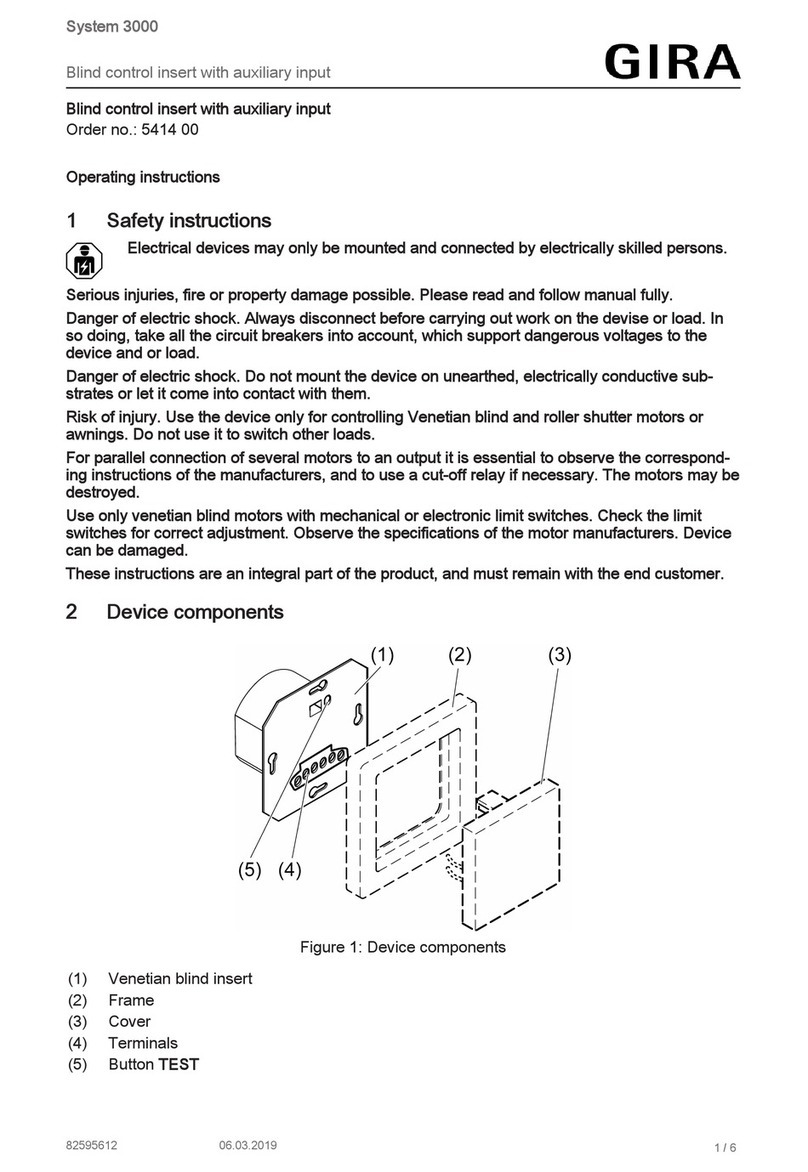
Gira
Gira System 3000 User manual

Gira
Gira System 106 Fingerprint Module 5551 User manual

Gira
Gira 5201 00 User manual

Gira
Gira System 3000 User manual

Gira
Gira 5567 000 User manual

Gira
Gira 1283 00 User manual
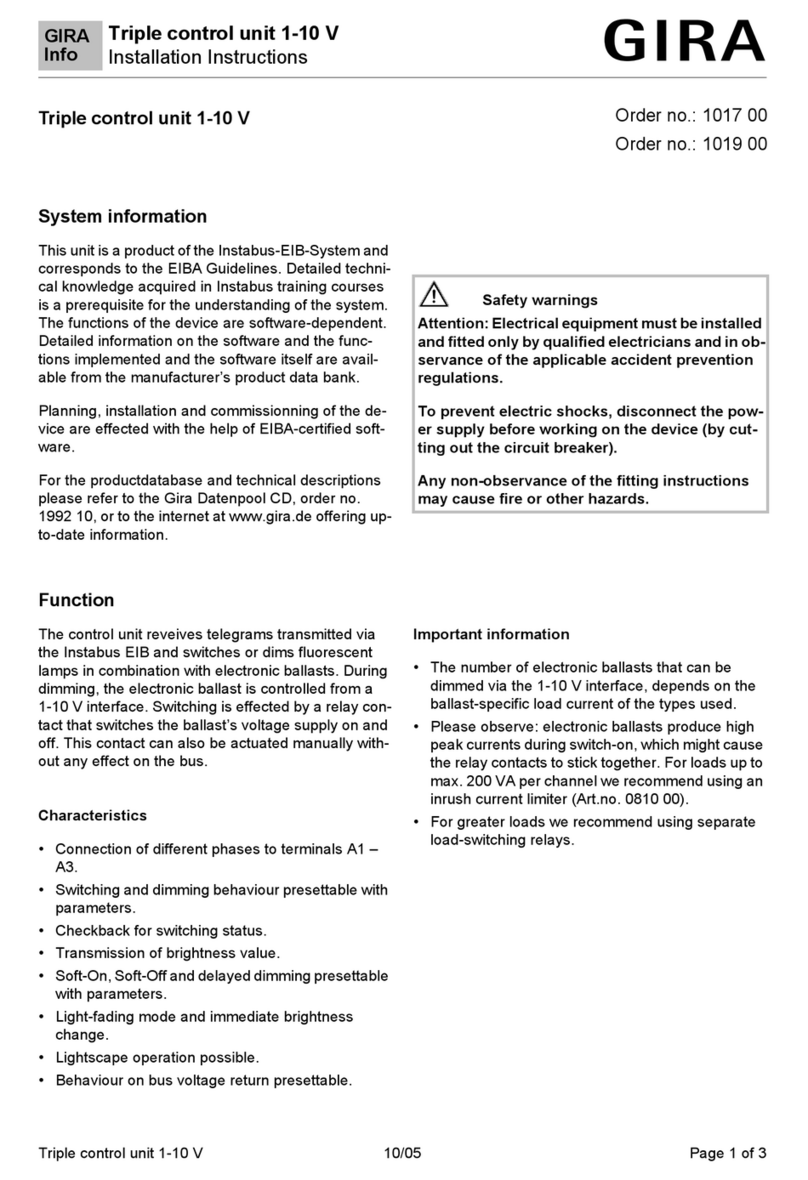
Gira
Gira 1019 00 User manual

Gira
Gira 1345 26 User manual
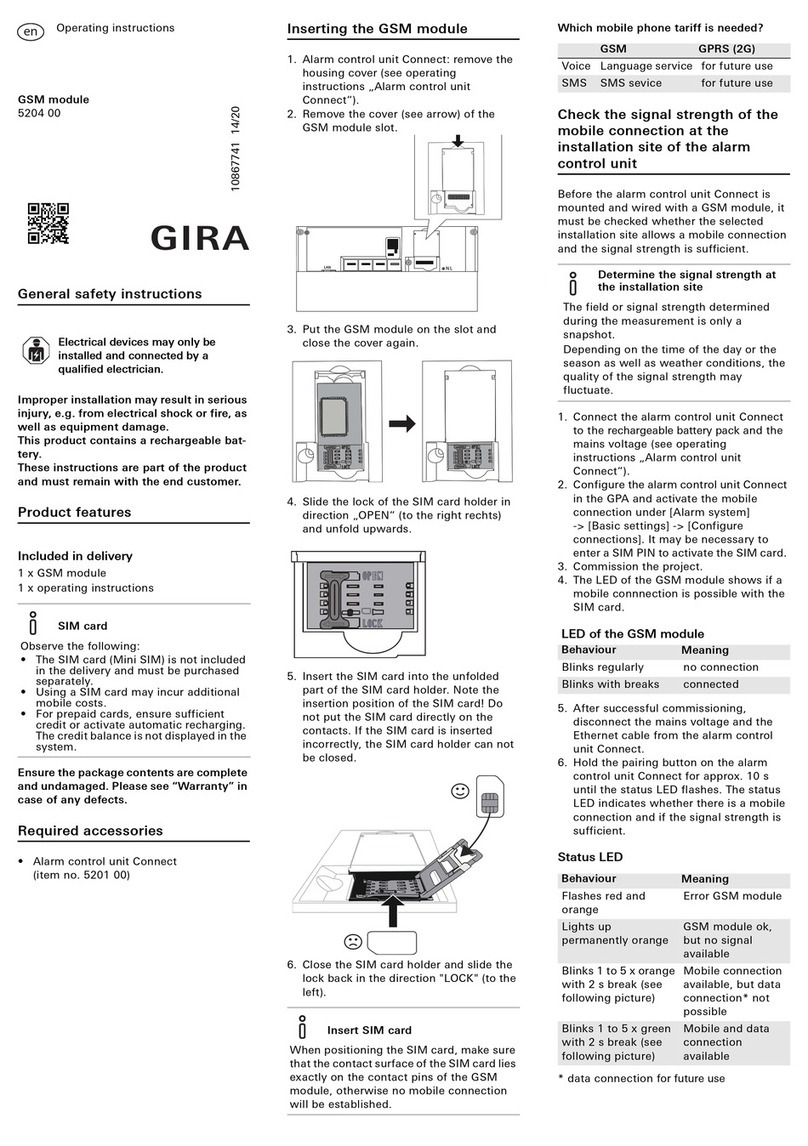
Gira
Gira 5204 00 User manual
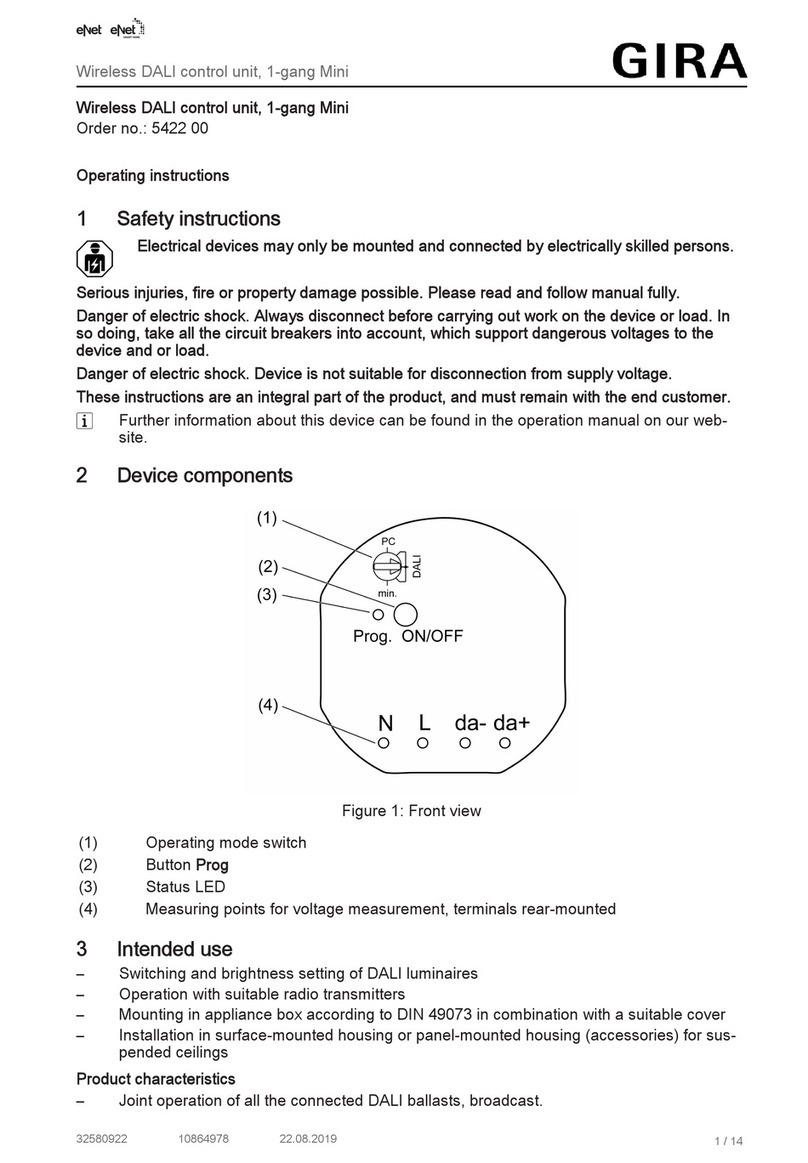
Gira
Gira DALI 5422 00 User manual
